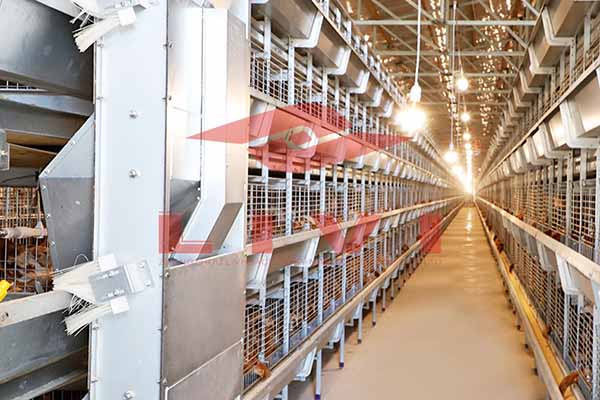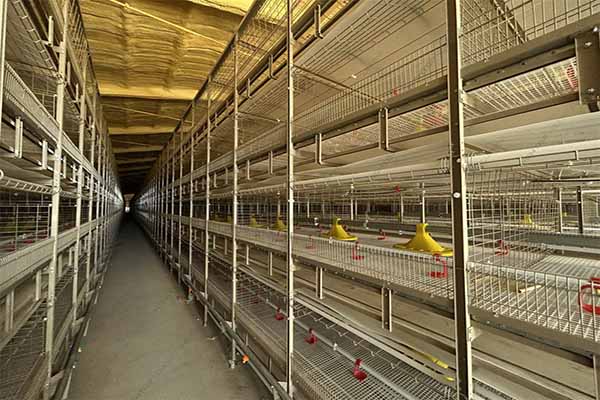Kenya Chicken Farm Automation: Equipment Loan Plan and Its Impact on Efficiency
Time : 2025-06-27
Kenya’s poultry industry has been growing at a rapid pace, with the demand for chicken meat and eggs increasing annually. To keep up with this demand, chicken farmers are increasingly turning to automation to improve efficiency and productivity. In this article, we will explore the importance of automation equipment for chicken farms in Kenya, the loan plans available for acquiring such equipment, and the overall impact on farm operations.
The Need for Automation in Chicken Farms
Modern chicken farming requires a high level of efficiency to maintain profitability. Manual labor-intensive processes can lead to reduced productivity and increased costs. Automation equipment can help streamline operations, reduce waste, and improve the overall health and welfare of the chickens. Here are some key reasons why automation is crucial for chicken farms in Kenya:
- Consistency in Feeding: Automatic feeders ensure that chickens receive a consistent diet, reducing the risk of malnutrition and improving growth rates.
- Temperature Control: Automation systems can maintain the optimal temperature for chickens, reducing stress and improving their health.
- Water Supply: Automated water systems reduce the need for manual watering, ensuring consistent access to clean water.
- Health Monitoring: Automated systems can monitor the health of chickens, alerting farmers to potential issues early on.
- Space Utilization: Automation can maximize the use of space, allowing for higher stocking densities without compromising on animal welfare.
Types of Automation Equipment for Chicken Farms
There are various types of automation equipment available for chicken farms in Kenya. Here are some of the most commonly used:
Feeders
- Automatic Feeding Systems: These systems ensure that chickens are fed at regular intervals, eliminating the need for constant monitoring.
- Grain Driers and Feed Grinders: These devices help in processing feed, ensuring that it is in the right form for chickens to digest efficiently.
Water Systems
- Automatic Waterers: These provide a continuous supply of clean water to chickens, preventing dehydration and improving their overall health.
- Water Pumps: Automated water pumps ensure that water is available even during power outages.
Temperature Control
- Climate Control Systems: These systems maintain the optimal temperature for chickens, regardless of the external weather conditions.
- Heaters and Cooling Units: These devices can be used to provide additional warmth or cool air when needed.
Health Monitoring
- Automated Health Monitoring Systems: These systems can track the health of chickens, alerting farmers to potential diseases early on.
- Biometric Equipment: This technology can be used to monitor individual chicken growth and health.
Manure Management
- Automatic Manure Removal Systems: These systems help in the efficient removal of manure, reducing the risk of disease and improving the quality of the farm environment.
The Role of Loan Plans in Acquiring Automation Equipment
For many chicken farmers in Kenya, the cost of acquiring automation equipment can be a significant barrier. This is where loan plans come into play. Loan plans provide farmers with the financial means to purchase the necessary equipment without having to pay the full amount upfront. Here are some of the benefits of loan plans for chicken farmers:
- Accessibility: Loan plans make it easier for small-scale farmers to access high-quality automation equipment.
- Lower Initial Costs: By spreading the cost over time, farmers can manage their cash flow more effectively.
- Improved Productivity: The long-term benefits of automation can lead to higher profits, making loan repayments more manageable.
- Financial Inclusion: Loan plans can help farmers build their creditworthiness, opening up more opportunities for future financing.
Impact of Automation on Chicken Farm Operations
The implementation of automation equipment in chicken farms can have a profound impact on farm operations. Here are some of the key benefits:
- Increased Productivity: Automation can significantly increase the output per unit of labor, allowing farmers to produce more with fewer workers.
- Reduced Costs: By optimizing feed usage, reducing disease outbreaks, and improving energy efficiency, automation can lead to lower operational costs.
- Enhanced Animal Welfare: Automation systems can create a more comfortable and hygienic environment for chickens, leading to improved welfare and better growth rates.
- Improved Data Collection: Automation equipment can provide valuable data on chicken health and farm operations, helping farmers make more informed decisions.
Conclusion
As the poultry industry in Kenya continues to grow, automation equipment is becoming an essential tool for farm success. Loan plans provide a practical solution for farmers looking to invest in automation without the burden of high upfront costs. By embracing automation, chicken farmers can improve their efficiency, reduce costs, and ultimately increase their profitability. The future of Kenya’s poultry industry lies in the hands of progressive farmers who are willing to adopt new technologies and innovative financing solutions.

<img src="https://zp.qualitychickenfar m.com/imgs/45000-layer-in-a-chicken-house-design.jpg” alt=”inserted image”>
m.com/imgs/45000-layer-in-a-chicken-house-design.jpg” alt=”inserted image”>











